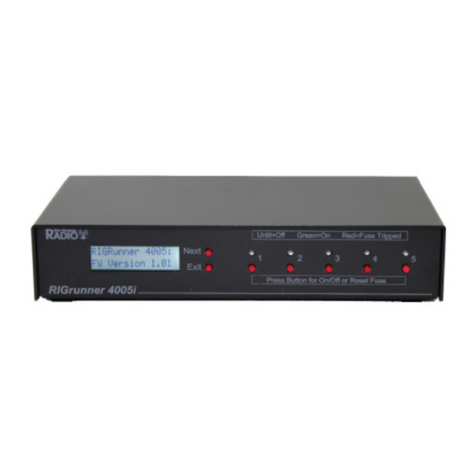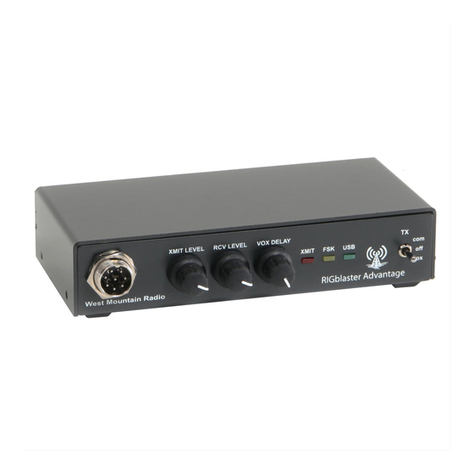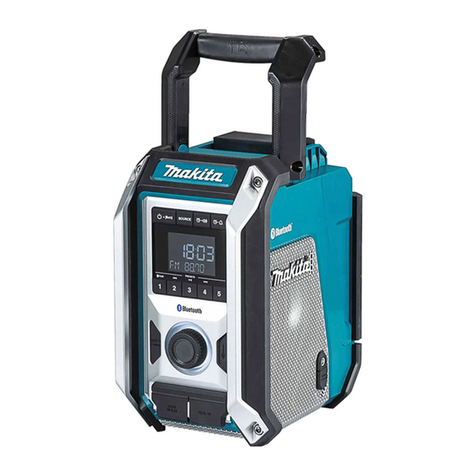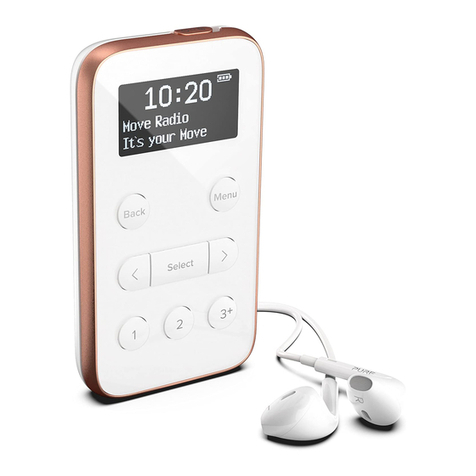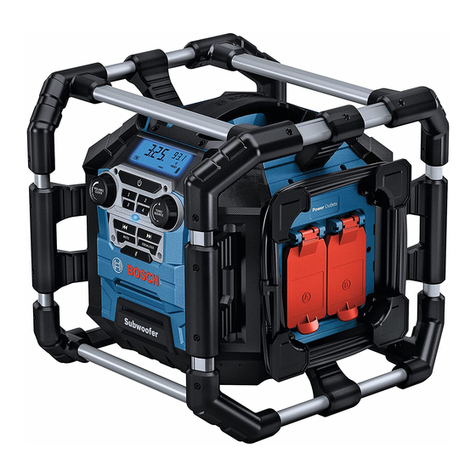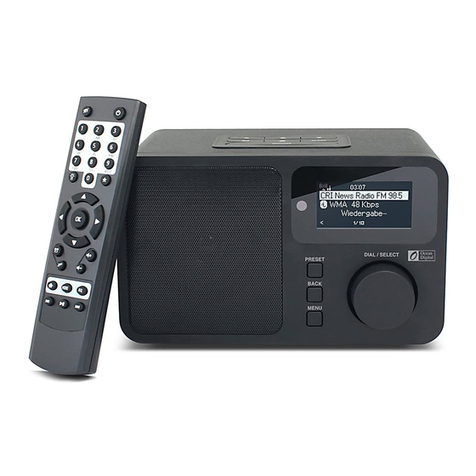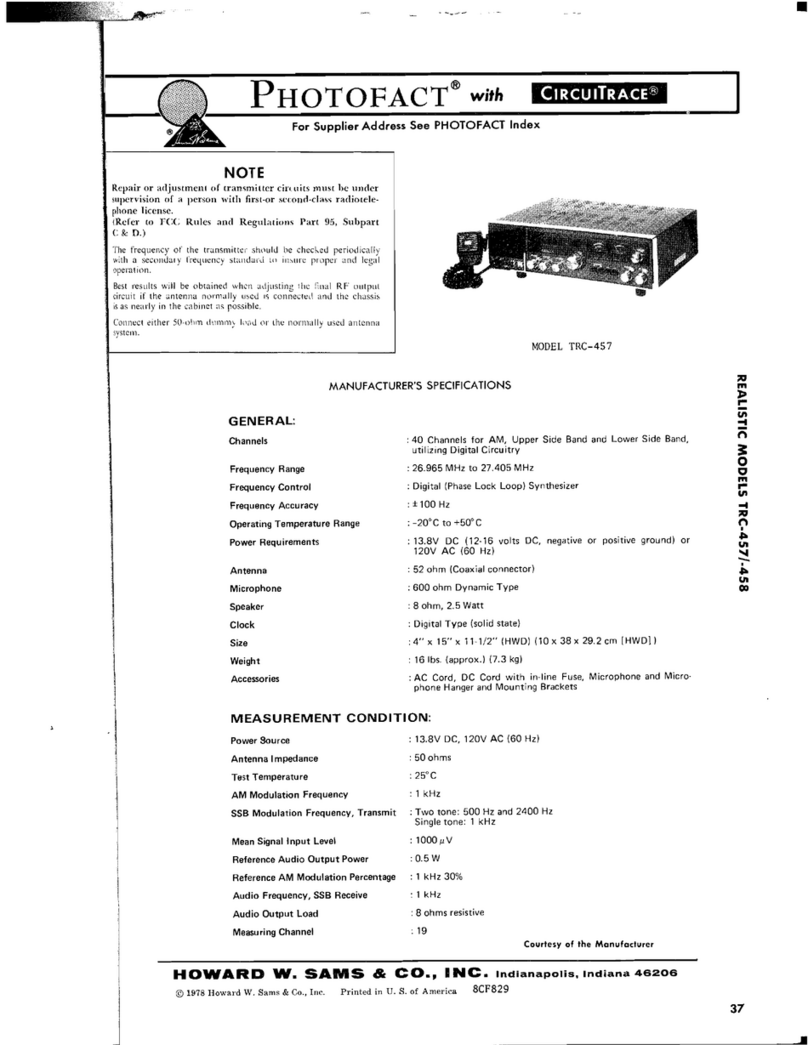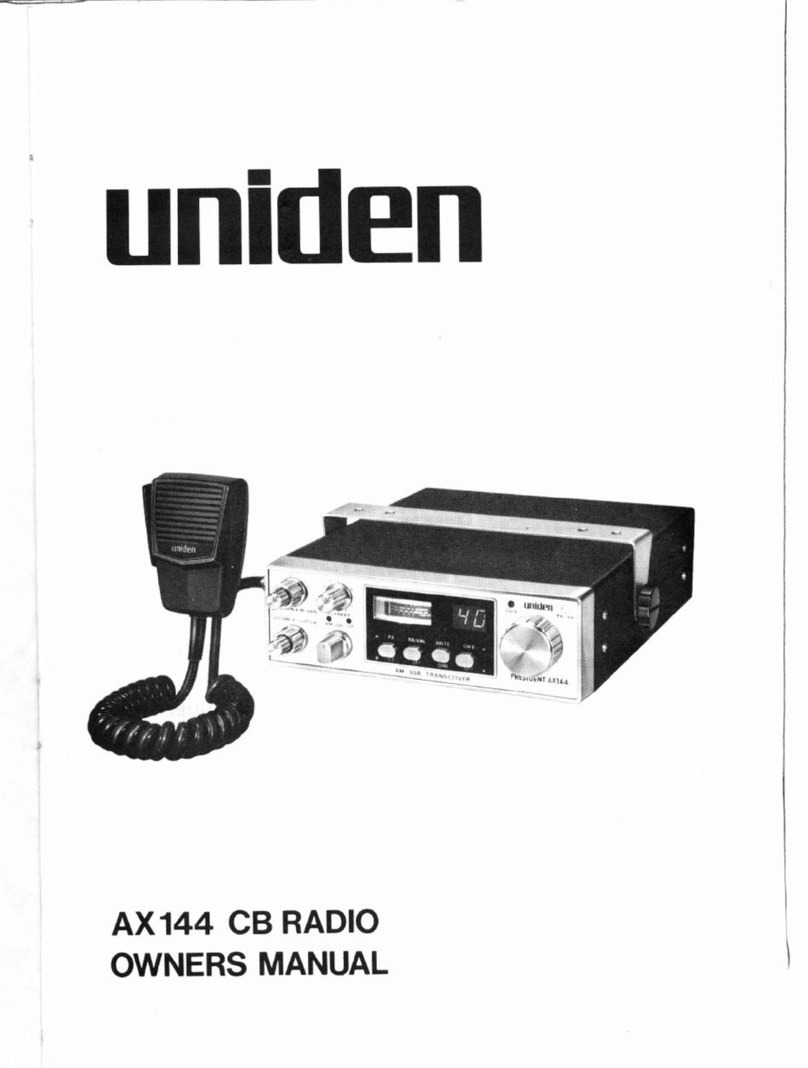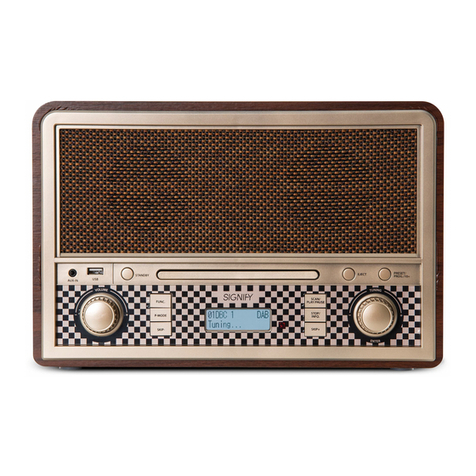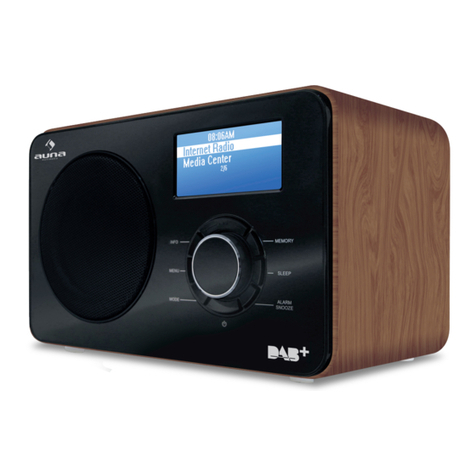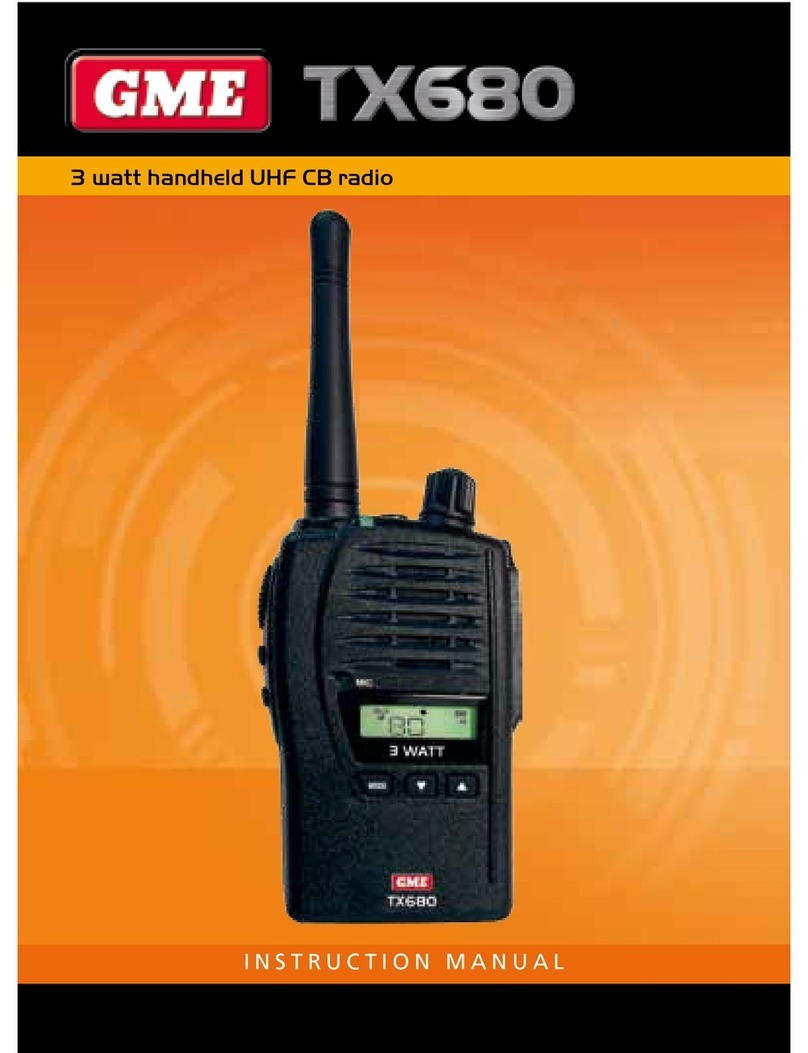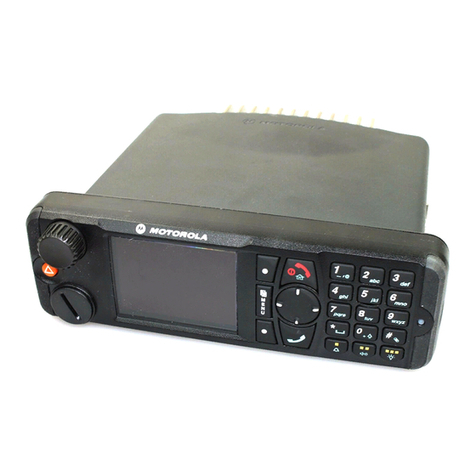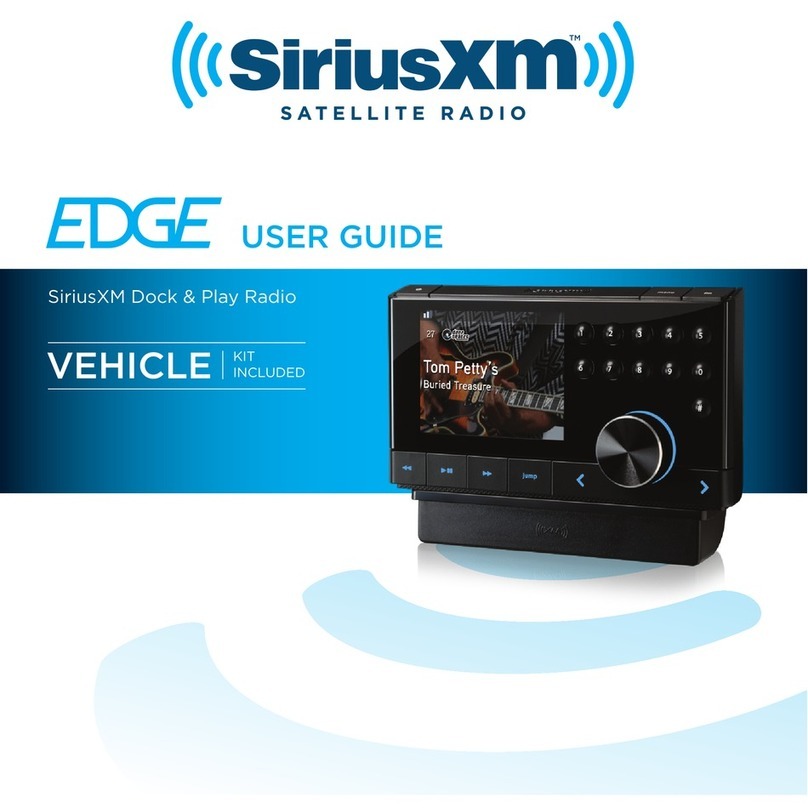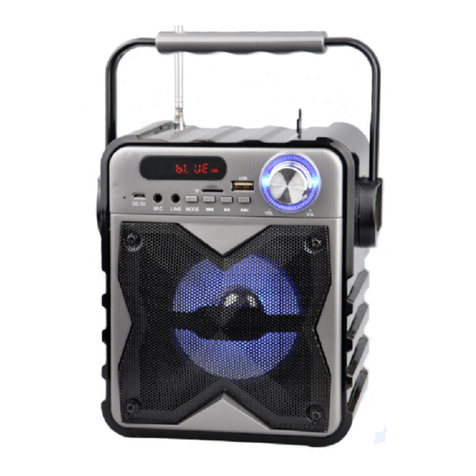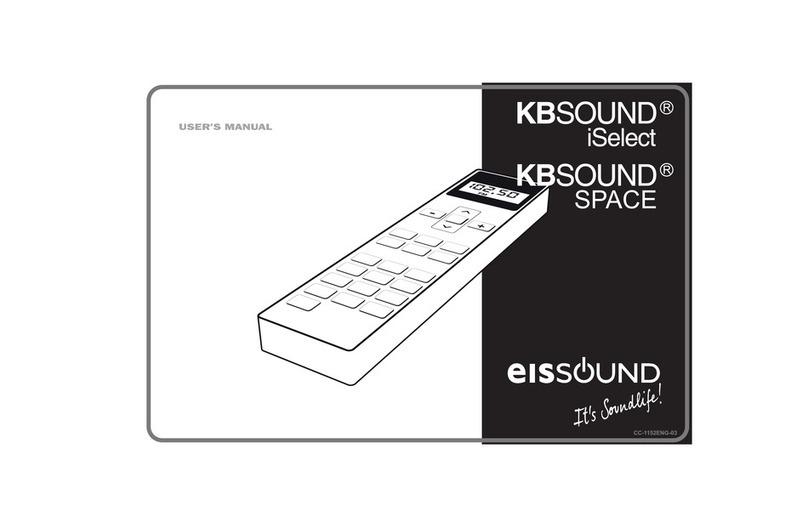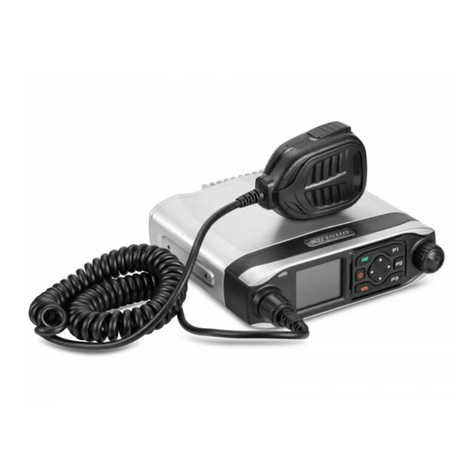West Mountain Radio Ringblaster nomic User manual

RIGblaster
rig to sound card interface
nomic /no-mik/
USB universal
OWNERS MANUAL
6TH EDITION
© 2008 West Mountain Radio, All rights reserved.
All trademarks are the property of their respective owners.
Included with a
RIGblaster
nomic
USB
universal
1-RIGblaster nomic (COVERS LOOSE FOR EASY SETUP)
1-Acessory Zip Lock bag:
4 Single pin jumper wires, white with black connectors
4-#6 black stainless steel sheet metal screws
4-double sided adhesive pads
4-stick on protective feet
1-RIGblaster/RIGtalk CD
1-3’ Modular RJ45 to 8 pin round screw on microphone cable
1-3’ Modular RJ45 to Modular RJ45 plug in microphone cable
2-6’ 1/8” stereo mini plug audio cables
1-6’ DB9M to DB9F RS232 serial cable
1-USB to RS232 serial converter with 6’ cord

RIGblaster
nomic
USB
Owners Manual
Thank you for purchasing a RIGblaster nomic. We hope that it provides many hours of amateur radio enjoyment.
FOR MAXIMUM ENJOYMENT PLEASE PROCEED IN ORDER, STEP BY STEP! DO NOT CONTINUE TO THE
NEXT STEP UNTIL YOU HAVE CORRECTLY COMPLETED THE STEP YOU ARE ON.
NOTE: IF YOU CALL FOR SUPPORT WE WILL TO NEED TO KNOW WHAT STEP OF THIS MANUAL YOU
ARE HAVING A PROBLEM WITH. WE MAY NOT BE ABLE TO HELP YOU IF YOU HAVE NOT READ AND
FOLLOWED THE FOLLOWING STEP BY STEP INSTRUCTIONS.
1. INSTALL SOFTWARE AND START RECEIVING: You do not need the RIGblaster for receive, only for transmit,
so leave it in the box. Put our CD in your CD drive and, after a few seconds, our CD menu should appear on your
screen. If the menu does not appear, you probably need to set your CD ROM drive to autorun (as explained in
Windows help). If you cannot get the CD to autorun, browse to the CDROM and double click the autorun.exe file
in order to display our CD menu.
Please read the CD "read me" file first! We put it there for to read! Note that this product manual is also on the CD
but either the paper or electronic version may be more up to date with the latest version appearing on our support
page.
After reading the Readme file, click the software collection XMIT button; click and select the PSK31 mode button,
and then click the WINPSK program install button. This installs a simple and easy PSK31 program to get started
with. (Only if you are an advanced user should you install your choice of program or mode.)
Connect your radio's speaker output to your computer's line input (mic. on a laptop) using one of the supplied 1/8"
stereo mini plug audio cables. Other connections may be used but we suggest you test initially with this simple
hookup. If you have purchased a fixed level audio cable from us, made for your model radio, then follow the instruc-
tions that came with that cable for connecting a receive audio signal. Note that you may use any audio output
on your radio (speaker, headphone, record, phone patch, data audio out) and either of your computer's inputs,
line or mic. inputs. To choose the best connection, consider the signal levels and your preference for operating
convenience.
WARNING: Be certain your computer is powered from the same AC house wiring circuit (on the same circuit
breaker) as the rest of your ham station! This is safer and better for many reasons that are both related and unre-
lated to the RIGblaster installation.
Next tune in a signal for the mode and program you have installed and are running. For PSK31 it is best to tune
to 14.07015 USB.
Open the sound card "Recording Control" panel and select whichever input you are using, mic. or line, and slide the
slider up until see the signals you radio is receiving on the software's waterfall display. Note that on most computers
you cannot set the input level to a sound program with the volume control sliders; you must use the recording control
sliders! Set the level as described in the help files and instructions supplied with the program you are using (We
do not write any software so our instructions are specifically for setting up a RIGblaster. The software instructions
should come with the program.)
After confirming that your software is receiving properly, check that it will generate a transmit tone. You should be
able to hear transmit tones, as sound, coming out of your computer when the software is placed in its transmit mode.
This is an important test of the computer and software operation. With no transmit sound you will not be
PAGE 1

able to transmit!
If you have a problem with this step simply install and try another similar ham radio program instead. If another
program works you can be sure you there was a problem with the first program. If several programs do not work
then double check your sound card virtual settings and your audio connections.
For more information on using and operating a sound card in a ham station read K1UHF's "The In's and Out's of
a Sound Card" in the October 2003 QST:
http://www.westmountainradio.com/pdf/Ins&Outs.pdf
Continue to the next step only after you have confirmed that you can receive signals and can hear transmit tones
generated.
2. SET THE RIGblaster MICROPHONE WIRING JUMPERS: Different brands of radios use standard microphone
connectors but wire them differently. We have solved this problem by using jumpers.
You must install jumpers to match your radio's microphone wiring. The correct jumper configuration depends on the
brand of radio and the type of microphone connector. Metal eight pin round screw on microphone connector dia-
grams on page 7 and square RJ45 modular 8 wire telephone style plugs on page 8. Be certain to use the diagram
that matches both your brand of radio and the type of microphone connector that it uses.
.
If you cannot find the appropriate jumper diagram for your radio check our support page: http://www.westmountain-
radio.com/supportno.htm
WARNING: It is possible to damage your radio by shorting out a DC voltage that may be on your mic. jack. Be
certain you have the correct jumper wiring before turning on your radio.
TIP: The diagrams depict the actual appearance of the jumper block in the RIGblaster. The black squares with the
wires depict where the black and white wire jumpers go. A circle denotes that no jumper is installed on that pin.
After completing the jumper Installation you may put the cover on. Carefully align the circuit board and covers, mak-
ing sure that the side screw holes line up. Be careful not to put force on the potentiometer level control adjustment
shaft. The supplied screws are sheet metal type and must be driven in firmly with a fresh, properly fitting, #2 Phillips
head tip. The screws will be tight at first and then go in easier. Do not over tighten when they reach bottom.
After you have installed the jumpers and the covers, connect the appropriate RIGblaster mic. cable, either RJ45 or
8 pin round screw on, between the RIGblaster and your radio.
Proceed to the next step for testing.
3. CONNECT SERIAL CONTROL CABLE: All Amateur Radio sound card programs, over 100 of them, without
exception, require an RS232 serial port for proper operation. However, most new computers no longer have this
connection. Your RIGblaster is supplied with two cables to provide your choice, and full functionality, with both
older DB9 RS232 serial ports, or with a USB connection. The supplied USB cable will emulate a DB9 RS32 serial
port by converting a USB (universal serial bus) to a RS232 port.
Check to see if your computer has an available DB9 RS232 serial port. If you do, use the supplied DB9 male to DB9
female cable to connect between the computer's DB9 RS232 port and the RIGblaster's DB9 "SERIAL IN" connector.
Set the extra USB cable aside for future use.
If all you have on your computer is a USB socket then use the supplied USB to DB9 converter cable instead.
Refer to centerfold of this manual for a hookup diagram.
If you use the DB9M to DB9F continue to step 5 otherwise if you use the USB cable continue to the next step.
4. USB CABLE DRIVER INSTALLATION (Skip this step if you are using a actual RS232 serial port on your com-
puter)
The following procedure is to install the software drivers in order to make the USB cable hardware communicate
PAGE 2

Typical
RIGblaster
nomic
USB
station hookup diagram.
TRANSMIT AUDIO: Supplied 3.5 mm, 1/8” stereo
phone plugaudio cord from computer’s headphone* out-
put to RIGblaster’s audio in.
PTT CONTROL: Use either supplied DB9M to DB9F serial cable connected between the
RIGblaster’s serial port and the computer’s RS232 serial port. If the computer doesn’t have a
DB9 (9 pin) serial port, use the supplied USB to DB9 serial converter. (The USB converter cable
requires a driver installation)
RECEIVE AUDIO: Supplied 3.5mm, 1/8” stereo phone
plug audio cord from radios speaker or fixed level output
to computer’s mic* input.
MICROPHONE TRANSMIT AUDIO & PTT: Mic.
cable supplied with RIGblaster connects to radios
mic. input.
COMPUTER AUDIO MONITOR: Connect computer
headphones or amplified computer speakers.
* For desktop computers use the computer’s line input in
place of the mic. input and use the line output in place of
the headphone output.
Note: This is only a sample station hookup diagram; what might be used for portable operation with a RIGblaster nomic.
A desktop computer would have similar connections with different sound card connections.

with your computer. (Mac or Linux drivers are available on the CD ROM but these instructions are only for Windows
98SE, ME, 2000, XP and Vista 32 bit.)
A) Insert the West Mountain Radio CD ROM in your computer's CDROM drive.
B) Plug the USB connector into an available USB socket on your computer. If possible one you will keep it in.
C) A "New hardware found" Windows Plug & Play Wizard window should pop up.
D) For XP and Vista you should allow Windows to automatically complete the installation.
E) For Windows 98SE, ME and 2000 "tell" Windows to go to a specific location and direct Windows ONLY to the
CDROM drive letter that has the West Mountain CD in it.
F) At each prompt select whatever response that will cause Windows to complete the hardware installation. (DO
NOT cancel, go back, stop, or abort the installation! NO MATTER WHAT!)
G) You have completed the USB hardware driver installation at this point.
H) Plug the DB9 end connector into the RIGblaster's "Serial in" jack and screw in the thumb screws.
I) Right click the "My Computer" icon and then left click "Properties".
J) Select the "Hardware" tab and then select "Device Manager".
K) Scroll down and click the + symbol next to "Ports (COM & LPT)"
L) Check that you see the item: "Prolific USB-to-Serial Comm Port (COMx)"
M) **IMPORTANT** Make a note of what the COM number is, (x in (COMx). You will need that number to setup
your Amateur Radio program to do PTT.
If this step is OK, it confirms that your USB to serial converter is properly installed and should work. If and only if
this is confirmed correctly, continue to the next step.
5. SERIAL PTT CONTROL SET UP AND TEST: Run the program that you had working in step 1. From that
program's configuration or setup menu, (consult the program's help docs) set the program to control PTT using the
COM port that your RIGblaster's serial cable is plugged into. The RIGblaster nomic responds to both RTS and DTR
for PTT control; use either or both, if you have a choice.
Put that software into transmit (TX) and check that your radio automatically switches to transmit and shows PTT
activation (It may be normal not to see any RF output until you complete the next step).
Continue to the next step only if you have computer PTT control working properly.
6. CONNECT THE TRANSMIT AUDIO: Connect one of the supplied 1/8" stereo audio cables from your sound
card's line output (laptop headphone output) to the RIGblaster's audio in. If you unplug your desktop computer's
speakers to make this connection then plug the computer speakers back in to the RIGblaster's audio output so
they will operate as they did before. If you wish, instead, you can use computer headphones connected from the
RIGblaster's audio output to hear the computer. WARNING: if you connect un-amplified speakers or low impedance
headphones, not intended for use with a computer, you may not have enough transmit audio to transmit.
7. SET THE TRANSMIT AUDIO LEVEL TO YOUR RIG: Use your normal mic. gain setting, turn your speech
compressor off, and set the transmitter's RF drive (power control) all the way up (full power). You will be able to set
your power level to any power level later with the computer audio drive setting. WARNING: Failure to set your RF
PAGE 3
This manual suits for next models
1
Table of contents
Other West Mountain Radio Radio manuals
